
SELECT BABI-BAHA'I RELATED, BIBLIOGRAPHIES, NOTES AND PAPERS
of
Dr. Stephen N. Lambden

Stephen N. Lambden, UCMerced.
In progress and being reorganized. Last updated 16-09-2025.
- The Background and Centrality of Apophatic Theology in Bābī-Bahā'ī Scripture. PDf. Printed text of 1997. Apophatic Theology.pdf
- The Background and Centrality of Apophatic Theology in Bābī-Bahā'ī Scripture. Revised, Updated and Expanded ongoing edition...
- Apophatic Horizon or Theophanic Cloud? Some thoughts on the term `Amā' in Abrahamic-Islamic Literatures and Babi-Baha'i Intertextualities. 2018. 28-6-2018. PDf. In progress.
- “Huwa-Hiya"/"He–She-It is”, the Huwiyya (Divine Ipseity), and some aspects of re-created Basmalas within Babi-Baha’i Literary Commencements.
Huwiyya - Updated Beta PDf. version XX-2018,
- Some notes on the Arabic term al-Mashiyya (“The Divine Will”) and associated cosmogonical-theological hypostases in Islamic, Shī`ī-Shaykhī and Bābī-Bahā’ī literatures.
- Somes Notes on the Names (asmā') and Attributes (ṣifāt) of God in Islamic and Babi-Baha'i Theology.
- The Babi-Baha'i Mazhariyya (Theophanology) : Some Aspects of the person of the Manifestation of God (mazhar-i ilahi) and their Shi`i/Shaykhi and Abrahamic Background.
- Maẓhariyya : The roots and significance of the Bābī- Bahā’ī concept of the maẓhar- i ilāhī ("Divine theophany", "Manifestation of God").
Some Cosmological Aspects of Shi`i-Shaykhi and Babi-Baha'i Gnosis.
Stephen Lambden, UC Merced. In Progress 2025-6. In Progress and Correction
- The various "Worlds", "Universes or Supra-Terrestrial Realms according to Qur'anic and Post-Qur'anic Abrahamic- Islamic cosmology. Part 1.
- The various "Worlds", "Universes or Supra-Terrestrial Realms according to Qur'anic and Post-Qur'anic Abrahamic- Islamic cosmology. Part 2.
- The various "Worlds", "Universes or Supra-Terrestrial Realms according to Qur'anic and Post-Quranic Abrahamic- Islamic cosmology. Part 3.
- The various "Worlds", "Universes or Supra-Terrestrial Realms according to Muhyi al-Din Ibn al-Arabi (d. 638/1240). Part 4.
- The various "Worlds", "Universes or Supra-Terrestrial Realms according to the Writings expressive of Early Shaykhism, Shaykh Ahmad ibn Zayn al-Din al-Ahsa'i and Sayyid Kazim al-Husayni al-Rashti, Part 5
- The various "Worlds", "Universes or Supra-Terrestrial Realms according to the Writings expressive of the Religion of Sayyid `Ali Muhammad Shirazi, the Bab and Early Babism. Part 6
- The various "Worlds", "Universes or Supra-Terrestrial Realms according to Writings expressive of the Religion of the Mirza Husayn `Ali Nuri, Baha'-Allah. Part 7
- The various "Worlds", "Universes or Supra-Terrestrial Realms according to Writings of `Abd al-Baha `Abbas (1844-1921). Part 8
Based on various writings of Ibn al-`Arabi (638/1240)
- (1) `alam al-amr "The world of the Command" : (Rasa'il Ibn `Arabi. Beirut: Dar Sadir, 1997, Istilihat, p. 539)
- (2) `alam al-khalq "The world of the creation" : (Rasa'il Ibn `Arabi. Beirut: Dar Sadir, Istilihat, p. 539)
Worth noting here is the use of al-amr in connection with the definition of al-Kursi, the celestial "Pedestal" or "Footstall" of God : al-kursi -i [ndicates] the foundation of the Divine Command (mawdi` al-amr) and of the Prohibition [Culmination] (al-nahy).
Some furthe cosmological definitions in the Istilihat al-Sufiyya of Ibn al-`Arabi:
Under the letter "M" (mim), the Great Shaykh, Ibn al-`Arabi includes several realms associated with the world of the dominion or kingdom [of God] , commencing with the word al-mulk which is defined as the `alam al-shahada, the world of the testimony. attestation etc. They follow definitions of al-barzakh and al-jabarut (see below):
- al-Malakut [indicates] the World of the Unseen (`alam al-ghayb) - cf. Q.
- al-Malik al-Mulk [indicates that] "He is the Real One (huwa al-haqq) in the state expressing the metaphorical conditions (mujazat) of the servant (al-`abd) according to the nature of His Command (al-amr) relative to him. (Rasa'il, p.540).
- al-Mulk = "The Dominion",, "The Kingdom of God" indicates the world-Universe which is Shahada
- Mulk and Malakut
- The world of the Kingdom or Kingdom of God = `ālam al-mulk wa'l-malakūt
- Nasut
- Jabarut
- Jabarut :In the opinion of [`Ali ibn] `Abi Talib (d.40/661) it signifies the world of the Divine Grandeur (`alam al-`azimat) and in the opinon of many others it is indicative of the world of the Intermediate [the intermediate world] (`alam al-wast)
- Lahut, the Divine World
- Hahut the World of the Divine Ipseity, a transcendent realm which is the abode of the Deity or Godhead cf. huwiyya = "He-ness"; the linking of H and W in Arabic.
On Barzakh and Hūrqalyā (Arabic = هورقليا = h-w-r-q-l-y-a
The term Barzakh and its Islamic and Babi-Baha'i Interpretations
- Barzakh in the Qur'an, the Three Qur'anic Verses
- Barzakh in the Qur'an (1)
- Barzakh in the Qur'an (2)
- Barzakh in the Qur'an (3)
Some Notes on al-Barzakh in Select Islamic Philosophers, Theologians and Mystics
- Barzakh in the Rasa'il Ikhwan al-safa' (fl.10-11th cent CE).
- Barzakh in the writings of al-Ghazali (d. 505/1111).
- Barzakh in the writings of Shihab al-Din Yahya Suhrawardi (d. 587/1191 CE).
- Barzakh in the writings of Muhyi al-Din ibn al-`Arabi (d. 638 /1240).
- al-Futuhat al-Makkiyya sect. 63 (as above) "On the Gnosis of the Eternity of the People (fi'l-ma`rifat baqa' al-nas) in the Barzakh between the mortal world and [that of the Awakening on the Day of] Resurrection (bayn al-dunya wa'l-ba`th)." Towards a Tentative Translation of section 63 by Stephen Lambden
- Barzakh in the writings of Muhyi al-Din ibn al-`Arabi (d. 638 /1240).
- al-Futuhat al-Makkiyya sect. 63 (as above) "On the Gnosis of the Eternity of the People (fi'l-ma`rifat baqa' al-nas) in the Barzakh between the mortal world and [that of the Awakening on the Day of] Resurrection (bayn al-dunya wa'l-ba`th)." Towards a Tentative Translation of section 63 by Stephen Lambden
- Some further Barzakh references in the al-Futuhat al-Makkiyya of Ibn al-`Arabi (d.638/1240).
. إصطلاحة الصوفية
- Ibn al-`Arabi in his al-Istilahat al-sufiyya ("Sufi Lexicon") under the letter ` (`ayn) refers to two realms or "worlds" (`alam) commencing with the word "world" (first letter `) along with succinct definitions of these two realms, They are as printed within Rasa'il ibn al-`Arabi. ed. Muhammad Shihab al-Din `Arabi, Beirut: Dar Sadir, 1997. See Rasa'il Ibn `Arabi. Beirut: Dar Sadir, Istilahat al-sufiyya, pp. 529-541). Other printings:
- Kitāb Iṣṭilaḥāt al-Ṣūfiyya (“The Book of the Technical Terms of the Sufis”). Kamāl al-Dīn 'Abd al-Razzāq al- Kāshānī; ed. Aloys Sprenger. Calcutta, 1845. 167, IX pp.
- Iṣṭilaḥāt al-Ṣūfiyya, ed. A. Sprenger, rep. in A Glossary of Sufi Technical Terms. London: The Octagon Press, 1991.
- Iṣṭilaḥāt = [Kitāb] Iṣṭilaḥāt al-Ṣūfiyya. Muwaffaq Fawzī al-Jabr. Damascus: al-Ḥikmah, 1415/1995 and Beirut: Dar al-Kutub al-`Ilmiyya, 2005.
- The succinct definition of al-Barzakh in the Istilahat al-Sufiyya (The Sufi Lexicon") attributed to Ibn al-`Arabi (d. 638/1240).
`Abd al-Razzaq al-Kashani (d. c. 730/XXXX) and the Istilahat al-Sufiyya attributed to him.
- The succinct definition of al-Barzakh in the Istilahat al-Sufiyya attributed to `Abd al-Razzaq al-Kashani (d. c. 730/XXXX). ed. Muwaffaq Fawdi al-Jabr. [Beirut] Dar Sadir, 1416/1990. Bab al-ba', page 19,
[39] al-Barzakh. It is a "Partition" (ha'il) between two things (al-sha'iayn) and there are interfaces within it, something of the "World of Similitudes" (`alam al-mithal) ( a`ny; most obedient, humbly submissive), an "Obstacle" [Screening] (al-hajiz) between Things Densely Corporeal (al-ajsad al-kathifa) and the Magnificent "World of the Spirits" (`alam al-arwah al-majda).
[40] al-Barzakh al-Jami`, "The Universal / Comprehensive Barzakh". This is the [Divine] Presence expressing Oneness (al-hadrat al-wahidiyya) and the Primordial Entification (al-ta`yin al-awwal) which is the foundation of the Barzakh (asl al-barzakh) in its entireity kulli-ha). Wherefore then is it named the Primal Barzakh, the Most Great (al-a`zam) and the Greatest (al-akbar)!
Some further Barzakh references in the al-Futuhat al-Makkiyya of Ibn al-`Arabi (d.638/1240).
إصطلاحة الصوفية
Ibn al-`Arabi in his al-Istilahat al-sufiyya ("Sufi Lexicon") under the letter ` (`ayn) refers to two realms or "worlds" (`alam) commencing with the word "world" (first letter `) along with succinct definitions of these two realms, They are as printed within Rasa'il ibn al-`Arabi. ed. Muhammad Shihab al-Din `Arabi, Beirut: Dar Sadir, 1997. See Rasa'il Ibn `Arabi. Beirut: Dar Sadir, Istilahat al-sufiyya, pp. 529-541). Other printings:
- Kitāb Iṣṭilaḥāt al-Ṣūfiyya (“The Book of the Technical Terms of the Sufis”). Kamāl al-Dīn 'Abd al-Razzāq al- Kāshānī; ed. Aloys Sprenger. Calcutta, 1845. 167, IX pp.
- Iṣṭilaḥāt al-Ṣūfiyya, ed. A. Sprenger, rep. in A Glossary of Sufi Technical Terms. London: The Octagon Press, 1991.
- Iṣṭilaḥāt = [Kitāb] Iṣṭilaḥāt al-Ṣūfiyya. Muwaffaq Fawzī al-Jabr. Damascus: al-Ḥikmah, 1415/1995 and Beirut: Dar al-Kutub al-`Ilmiyya, 2005.
The succinct definition of al-Barzakh in the Istilahat al-Sufiyya (The Sufi Lexicon") attributed to Ibn al-`Arabi (d. 638/1240).
`Abd al-Razzaq al-Kashani (d. c. 730/XXXX) and the Istilahat al-Sufiyya attributed to him.
The succinct definition of al-Barzakh in the Istilahat al-Sufiyya attributed to `Abd al-Razzaq al-Kashani (d. c. 730/XXXX). ed. Muwaffaq Fawdi al-Jabr. [Beirut] Dar Sadir, 1416/1990. Bab al-ba', page 19,
- [39] al-Barzakh. It is a "Partition" (ha'il) between two things (al-shi'iayn) and there are interfaces within it, something of the "World of Similitudes" (`alam al-mithal) ( a`ny; most obedient, humbly submissive), an "Obstacle" [Screening] (al-hajiz) between Things Densely Corporeal (al-ajsad al-kathifa) and the Magnificent "World of the Spirits" (`alam al-arwah al-majda).
- [40] al-Barzakh al-Jami`, "The Universal / Comprehensive Barzakh". This is the [Divine] Presence expressing Oneness (al-hadrat al-wahidiyya) and the Primordial Entification (al-ta`yin al-awwal) which is the foundation of the Barzakh (asl al-barzakh) in its entireity kulli-ha). Wherefore then is it named the Primal Barzakh, the Most Great (al-a`zam) and the Greatest (al-akbar)!
- Barzakh in the writings of Muhyi al-Din ibn al-`Arabi (d. 638 /1240).
- al-Futuhat al-Makkiyya sect. 63 (as above) "On the Gnosis of the Eternity of the People (fi'l-ma`rifat baqa' al-nas) in the Barzakh between the mortal world and [that of the Awakening on the Day of] Resurrection (bayn al-dunya wa'l-ba`th)." Towards a Tentative Translation of section 63 by Stephen Lambden
Hūrqalyā (Arabic) = هورقليا = h-w-r-q-l-y-a
For such as might wonder, Hūrqalyā (Arabic هورقليا = h-w-r-q-l-y-a [sic.], pointing uncertain) is a seven letter Arabic transliterated loanword probably originating in an Islamic context with Shihāb al-Dīn Yaḥyā Suhrawardī (d. [executed] Aleppo 587/1191) who is viewed as the founder of the Ishrāqī or Illuminationist school of Islamic philosophy. I have a lengthy paper in press (due 2024 after a fifteen year blockage!) which argues that etymologically and conceptually this word (to simplify) derives (probably as orally transmitted with a supplementary adjective) from a Hebrew (הָרָקִיעַ, hā-rāqîa`), Aramaic-Syriac or Mandaic form of רָקִיעַ rāqîa`, a word which is often indicative of a luminous, firmament or interworld spanning or linking "heaven" and "earth".
The Cosmology of Early Shaykhism
The term Barzakh and its Babi-Baha'i Interpretations
The term Barzakh and its Islamic and Babi-Baha'i Interpretations
Barzakh in the Writings of the Bab,
The word Barzakh occurs four times in the Persian Bayan:
Persian Bayan II:7 (p.31ff) - فی بيان يوم القيمة On the Exposition of the Day of Resurrection (yawm al-qiyama) - twice though not in the II:7 of the Arabic Bayan :
Page 32
و ان هذا ما وعدنا اللّه من مظهر نفسه اطاعت او كرديد ثمرهء بيان نزد خداوند ترحّم بر خود كرده اگر نصرت نمی كنيد مظهر ربوبيت را را ظاهر كرده ايد و الا لايق ذكر نيستيد لن ندعو معه شيئا و بانچه بر او هستيدمحزون نكرده كه ظاهر ميشود بمثل آنكه من ظاهر شدم و عود می فرمايد
خلق بيان را و حال آنكه در قلوب شما خطور نكرده دون ايمان خودتان سرعت كنيد در اجابت خدا و تصديق بايات او كه او است اجابت من يظهره
Persian Bayan II:8 (p.34ff) twice- and again not in the parallel section of the Arabic Bayan:
Such is indicative in the Book of God (Kitab Allah) of the fruit of knowledge (thamarat-i `ilm) without action (bila `amal), And if death (mawt)
اينست ثمره علم بلا عمل در كتاب اللّه و اگرموت را فهميده از اقرار خود تخلف نمی ورزيده باينكه اقرار كند كه او حق است و از شئون محقق حق محتجب شود و اين موتی است كه در يوم قيامت نفع می بخشد كل را بعد از آن در برزخ الی ان يطلع اللّه شمس الحقيقة و انما المراد بالبرزخ بين الظهورين لا ما هو المعروف بين الناس بعد موت اجساد هم فاّن هذا دون ما يكلف به الناس لان بعد موتهم لا يعلم ما يقضی عليهم الا اللّه و ان ما هم به يؤمرون لابد ان يعلمون و هر گاه كسی در بحر موت سير نمايد عجائب ما لا نهاية بما لا نهايه ملاحظه می نمايد مثلا اگر در زمان رسول خدا كسی ميت شده بود ميديد كل شئونی كه بمن لم يومن بمحمّد ص راجع ميشود از عالم تجرد گرفته تا عالم تحدّد نفی محض و نار بحت است
REPETITION X2
و اگر موت را فهميده از اقرار خود تخلف نمی ورزيده باينكه اقرار كند كه او حق است و از شئون محقق حق محتجب شود و اين موتی است كه در يوم قيامت نفع می بخشد كل را بعد از آن در برزخ الی ان يطلع اللّه شمس الحقيقة و انما المراد بالبرزخ بين الظهورين لا ما هو المعروف بين الناس بعد موت اجساد هم فاّن هذا دون ما يكلف به الناس لان بعد موتهم لا يعلم ما يقضی عليهم الا اللّه و ان ما هم به يؤمرون لابد ان يعلمون و هر گاه كسی در بحر موت سير نمايد عجائب ما لا نهاية بما لا نهايه ملاحظه می نمايد مثلا اگر در زمان رسول خدا كسی ميت شده بود ميديد كل شئونی كه بمن لم يومن بمحمّد ص راجع ميشود از عالم تجرد گرفته تا عالم تحدّد نفی محض و نار بحت است و كل شئونی كه بمن يؤمن بمحمّد راجع ميشود از عالم تجرد الی منتهی التحدّد از شئون شجره اثبات و جنّت نبوت بوده و اوّل ميت نبوده و ثانی ميّت بوده و اوّل چون كه ميّت نشده فانی شده در نفی و ثانی چونكه ميّت شده باقی مانده در اثبات چه امروز ظاهر است ثمره ميّت شدن مؤمنين كه
اينست ثمره علم بلا عمل در كتاب اللّه و اگر موت را فهميده از اقرار خود تخلف نمی ورزيده باينكه اقرار كند كه او حق است و از شئون محقق حق محتجب شود و اين موتی است كه در يوم قيامت نفع می بخشد كل را بعد از آن در برزخ الی ان يطلع اللّه شمس الحقيقة و انما
المراد بالبرزخ بين الظهورين لا ما هو المعروف بين الناس بعد موت اجساد هم فاّن هذا دون ما يكلف به الناس لان بعد موتهم لا يعلم ما يقضی عليهم الا اللّه و ان ما هم به يؤمرون لابد ان يعلمون و هر گاه كسی در بحر موت سير نمايد عجائب ما لا نهاية بما لا نهايه ملاحظه می نمايد مثلا اگر در زمان رسول خدا كسی ميت شده بود ميديد كل شئونی كه بمن لم يومن بمحمّد ص راجع
... The term Barzakh indicates [the time period] between two [successive] Theophanies [Manifestations] (bayn al-zuhurayn) ...
Barzakh in Select further Writings of the Bab
Barzakh in the Writings of `Abdu'l-Baha'
Barzakh in the Writings of Baha'u'llah
![]()
ABRAHAMIC AND BABI-BAHA'I THEOLOGY AND PROPHETOLOGY.
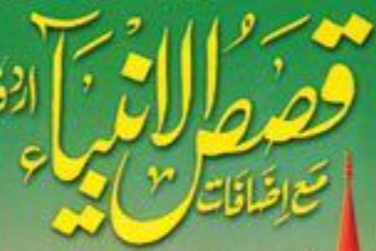
- Six or more Millennia until the Eschaton : The `Adamic Cycle' in Abrahamic Literatures and in Shi`i-Shaykhi and Babi-Baha'i Sacred Writings.
- From Adam until Muhammad in Islamo-Biblical, Shi`i-Shaykhi and Babi-Baha'i Sources, Some Introductory Notes.
- Part I. Adam and Eve and their Sons, Successors and Sacred books.
- Part II. 03. Enoch-Idris, Hermes and other Antediluvian Figures and sacred books associated therewith in Islamo-Biblical and Babi-Baha'i Prophetology.
- Part III. Noah (Heb. , nōaḥ) = Ar. and his sons and successors and associated sacred books
- Part IV. Three Arabian Prophets and Messengers: Hud (05), Salih (06), Shu`ayb (07) and associated Biblical and other figures.
- Part V. Abraham - Ibrāhīm (08), Isaac- Isḥāq (09) Ishmael - Ismā`īl (10) and associated patriarchs, prophets and their sacred Books.
- Part VI. Lot - Lūṭ (11), Job - Ayyūb (12) and associated patriarchs, prophets and their sacred Books.
- Part VII. (Heb,) Ya`āqôb - Jacob - (Ar.) Ya`qūb = Israel - (Ar.) Isrā’īl (13), the twelve Israelite tribes (13a), Joseph - (Ar.) Yūsuf (14), his brothers (14a) and associated prophets and their sacred Books.
- Part VIII. (Heb.) Mōšeh - Moses - (Ar.) Mūsā (15) and (Heb.) ‘Aḥārōn - Aaron- Hārūn (16) and associated sacred Books.
- Part IX. Dāwîd - David - Dāwūd (17) and šēlōmōh - Soloman - Sulaymān (18) and associated prophets and their sacred Books.
- Part X. (Heb.) `ēlīyāh - Elijah - Ilyās (19) and (Heb.) `ēlīšâ` - Elisha - Alyasa` (20) associated sacred Books.
- Part XI. Dhū’l-Kifl - Ezekiel - (Ar,) Hizkil + (21) and Yônāh - Jonah - Yūnus (22) associated Patriarchs and Prophets and their sacred Books.
- Part XII. (Heb.) XX `Ezrā’ Ezra - `Uzair (23); Luqmān (24) and Dhū’l-Qarnayn (25) with associated sacred Books.
Jesus and Christian origins
- Part XIII. (Heb.) Zechariah (0A), (Heb.) אֱלִישָׁבַע Elizabeth (0B) and - John the Baptist = (Ar.) Yaḥyā (26) and associated sacred Books.
- Part XIV. Mary and Joseph (Heb. Aramaic) יֵשׁוּעַ -Yēšūaʿ = Jesus = (Ar.) عيسى `Īsā’ (27), Simon Peter and his Twelve Disciples (27a) - (Ar.) al-ḥawāriyyūn ( الحواريون and their sacred Books.
- Part XV. Khālid ibn Sinān al-'Absī (Ar.) of Najd (7th cent CE) خالد بن سنان العبسي + The pre-Islamic prophets of the "Interval".
Islamic Origins and Cyclic Schemata.
- Part XVI. The Prophet Muhammad (27) (Ar.) and his revealed book, the Qur'an.
- Part XVII. Imam `Ali ibn Abi Talib (d.40/661) as the "return of Christ" and an eschatological figure,
- Part XVIII. The twelfth Imam and the Mahdi ("Rightly Guided One") along with Imam Husayn at the Eschaton.
![]()
Central Figures and Successors of the Baha'i Religion after 1892 CE.
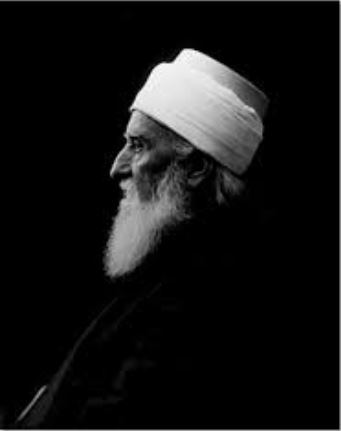
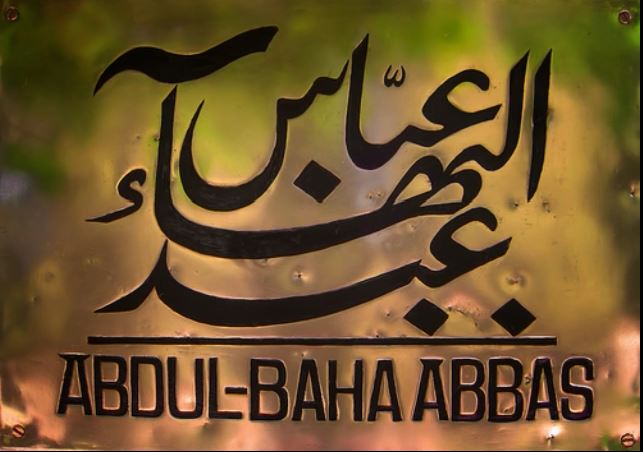
- `Abbas Effendi, `Abd al-Baha' (1844-1921 CE), Some Biographical Notes and Studies.
- A Bibliography of the Writings of `Abbas Effendi, `Abd al-Baha' (1844-1921 CE) + PDfs.
- Select ms., printed compilations and other works containing writings of `Abd al-Baha'.
- `Abd al-Baha' on Abrahamic, Islamic and other world religions.
- Accounts of Eastern and Western Pilgrimage Visitations to `Abd al-Baha' and related Books and Notes + PDfs.


- A Bibliography of the Writings of Shoghi Effendi Rabbani (c. 1896-1957), with Notes Stuies and PDFs.
- Select Accounts of Eastern and Western Pilgrimage Visitations to Shoghi Effendi.
![]()
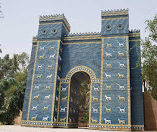
THE BAHA'I RELIGION AND THE ASIAN AND ABRAHAMIC RELIGIONS
- The Baha'i Religion, Hinduism and the Hindu sacred writings: Some Introductory Notes.
- The Baha'i Religion, Zoroastrianism and Zoroastrian sacred writings : Some Introductory Notes.
- Zoroastrian Eschatology, Apocalyptic and Messianism : Some Notes on Babi-Baha;i Fulfillments.
- The Baha'i Religion, Judaism and the Hebrew Bible: Some Introductory Notes.
- The Baha'i Religion, Jewish messianisms and Notes on Babi-Baha'i Fulfillments.
- The Baha'i Religion, Christianity and the New Testament: Some Introductory Notes.
- The Baha'i Religion, Christianity and Christian Doctrines.
- The Babi-Baha'i view of the Bible : An annotated Compilation.
- The Baha'i Interpretations of the Bible : An annotated Compilation.
- The Baha'i Christology, Some Introductory Notes.
- The Babi-Baha'i Relgons, Islam Muhammad, Islam and the Qur'an, Some Introductory Notes,
- The Babi-Baha'i view of the Prophet Muhammad.
- The Babi-Baha'i view of the Qur'an and Hadith.
![]()
![]()
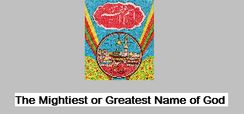
الاسم الاعظم
Biblical, Jewish, Christian, Islamic and Babi-Baha'i views of the Mightiest or Greatest Name of God.
- The Biblical and Jewish roots and Jewish-Christian reverberations of the Greatest or Mighty Name of God.
- Preliminary Note : the al-ism al-a`zam (Mightiest Name of God) in Islamic literary history and modern western scholarship.
- Emergent Islamic theology : the Most Beautul Names of God (al-asma' al-husna) and the al-ism al-a`zam, the Mightiest Name of God.
- [X] The al-ism al-a`zam, Mightiest Name of God in select Sunni and Shi`i Tafsir Literatures.
- The al-ism al-a`zam in select Sunni and Shi`i Hadith Literatures.
- Commentaries on the ninety-nine Names of God and the al-ism al-a`zam, ism Allāh al-a'ẓam, the Mightiest Name of God.
- Imam `Ali ibn Abi Talib (d. 40/661) and the al-ism al-a`zam.
- The al-ism al-a`zam, Mightiest Name of God in Select Imami Shi`i Traditions and Literatures.
- [X] The al-ism al-a`zam and the Abrahamic Du`a al-simat as transmitted through certain twelver Imams.
- [X] The al-ism al-a`zam, Mightiest Name of God in Qisas al-anbiya' (Stories of the Prophets) and select Sirah-Tarikh and related Literatures.
- [X] The al-ism al-a`zam in Sunni and Shi`i Devotional Literatures.
- [X] The al-ism al-a`zam in Islamic magic and esoterica.
- [X] The al-ism al-a`zam, Mightiest Name of God in emergent Sufism and Islamic mysticism.
- [X] The al-ism al-a`zam, Mightiest Name of God in Isma'ili Literatures.
- The al-ism al-a`zam, Mightiest Name of God for Shihāb al-Dīn Yaḥyā Suhrawardī ( d. 587/1191) and select Ishraqi thinkers.
- The al-ism al-a`zam, Mightiest Name of God in select writings of Ahmad ibn `Ali al-Būnī (d. Cairo 622/1225) and his devotees.
- The al-ism al-a`zam in the writings of Muḥyi al-Dīn ibn al-`Arabī (d. Damascus, 638/1240) and select devotees.
- The al-ism al-a`zam, Mightiest Name of God in Persian Sufi Poetical and related Mystical Literaries.
- Raḍī al-Dīn 'Alī ibn. Mūsā ibn Ṭāwūs al-Hasanī al-Ḥillī Ibn Tāwūs (d. 664/1226) on the Mightiest Name of God.
- Shaykh Aḥmad ibn Muhammad ibn Fahd al-Hillī (fl. 9th cent. AH /15th cent CE) on the Mightiest Name of God. Lambden Translation+ PDf. Arabic Text.
- PDf. Taqi al-Din al-Kaf`ami (d. 900/1494-5), Misbah XXXI. PDf. Lambden Trans., Web I 2009 version : Kafami-Misbah-031Web1-2009.pdf
- Taqi al-Din al-Kaf`ami (d. 900/1494-5) on the Mightiest Name of God. Lambden, Revised Annotated Translation.
- The Names of God and theories of His Mightiest Name (al-ism al-a`ẓam) with special reference to the Miṣbāḥ (Luminary) of Tāqī al-Dīn Kaf`amī (d. 900/1494-5) and Bābī-Bahā’ī theologies of the Eschatological Name.
- Abstract of 2009 Paper.
- The al-ism al-a`zam in the writings of Rajab al-Bursi (d. c. 814/1411).
- The Treatise of Jalāl a-Dīn `Abd al-Raḥman al-Suyūṭī (d. 911/1505) on the Mightiest Name of God,
- PDf, "The Well-strung Pearls on the Mightiest Name [of God]").
- The al-ism al-a`zam among select `Ifani Theologians, Mystics and Philosophers of the Safavid era (1501-1722).
![]()
بهاء الدين محمد بن حسين عاملي
Bahā' al-Dīn al-`Āmilī = Shaykh Bahā'ī
Muḥammad ibn ʻIzz al-Dīn Ḥusayn ibn ʻAbd al-Ṣamad al-`Āmilī al-Jubā'ī, (b. 953-1030 AH = 1547-1621 CE) on the Mightiest Name of God.
- Bahāʾ al-Dīn Muhammad al-`Āmilī (953-1030 = 1547-1621 CE) = Shaykh Bahā'ī : Select Primary Sources, mss. and Printed Texts.
- `Āmilī, Shaykh Bahā'ī : Bibliography of Secondary Sources.
در رموز اسم اعظم
("On the Secrets of the Mightiest Name [of God]") trans. Stephen Lambden revised 2016. Beta version : PDf. Dar Rumuz.pdf
![]()
- The al-ism al-a`zam, Mightiest Name of God in Later Shi`i thinkers..
- The al-ism al-a`zam in Early Shaykhism Shaykh Ahmad al-Ahsa'i (d. XXXX/1826) and Sayyid Kazim Rashti (d.1259/1843).
- Sayyid Kāẓim Rashti on the Shī`ī graphical forms of the al-ism al-a`zam (the Mightiest Name of God).
- The motif of the Mightiest Name of God (al-ism al-a`zam) in the Writings of the Bab.
- The al-ism al-a`zam in Amulets of the Bab and his followers.
- The motif of the Mightiest Name of God (al-ism al-a`zam) in the Writings of Baha'-Allah and his successors,
- The Islamo-Biblcal Mightiest Name of God Motif and Bābī-Bahā’ī Concepts of the Ism Allah al-A`zam.
- The Baha'i view of the Arabic-Persian word بهاء Baha' as quintessence of the Mightiest Name of God.
- Some Bibliographical Notes on Abrahamic-Islamic and related Concepts of the Mightiest or Greatest Name of God.
- PDf. 1998 Lambden article : `The word Baha' : Quintessence of the Greatest Name of God' in Journal of Baha'i Studies vol. 8 No, 2 pp. 13-45. SL-Baha' Quintessence.pdf See further the links immediately above and below.
![]()
ESCHATOLOGICAL DOXOPHANY:
The Motif of the Divine theophanic Radiance and its Messianic Associations.
- [1] Theological radiance and messianic glory in Zoroastian and associated writings
- [2] Theological radiance and messianic glory in the Hebrew Bible and select Intertestamental Literatures.
- [3] From Adam until Jesus : The succession of Abrahamic Prophets and the Divine, Theophanic Glory (kavod).
- [4] Theological radiance and messianic glory in Judaisms and Jewish mysticism.
- [5] Theological radiance and messianic glory in the New Testament.
- [6] Theological radiance and messianic glory in Apostolic, Patristic and later Christian theologies.
- [7] Theological radiance and messianic glory in Islamic Literatures. I
- [8] Theological radiance and messianic glory in Islamic Literatures II.
- [9] Theological radiance and messianic glory : Abrahamic Bibilographies.
![]()

![]()
The Word Baha' and its cognates in Abrahamic and Babi-Baha'i Literatures.
- The Arabic word Baha' as the Mightiest Name of God (al-ism al-a`zam) and its Dictionary definitions and cognates. Notes from pre-2010.
- A Tetragram of Sacred Letters - The Word Baha' : B ب + H ه + Aأ + '
- An overview on the word Baha' as the Mightiest Name of God (al-ism al-a`zam) in Islamic Literatures and in the Bābī and Bahā’ī Sacred writings.
- The word Baha' as the Divine Splendour motif and the Greatest Name in Asian religions.
- [X] The word Baha' and its Cognates : Abrahamic, pre-Islamic intimations.
- The word Baha', Kabod and cognates in the Hebrew Bible, Targums and Rabbinic Literature.
- The kavod ("Divine Glory") in the book of Ezekiel and in Merkabah mysticism and related literatures..
- The book of Daniel, the Ancient of Days and the mysticism of the Shi`ur Komah ("Dimensions of the Deity").
- The Divine Glory motif in Pseudepigraphical and associated Literatures,
- The Divine Glory in Jewish Literatures.
- Ka`b al-Ahbar (d.c. 32/651) and the word Baha' in the Tawrat (Hebrew Bible) and a Supplication of the Prophet Muhammad utilizing the al-ism al-a`zam (Mightiest Name of God).
- The Arabic Majd as a Theophanic locus in Jewish, Christian and Islamic Biblical, post-Biblical and Islamic Literatures.
- The "Great Glory" as Greek Doxa and Arabic Majd in Matthew 24:30b and Synoptic parallels (Mark 13:XX; Luke 17:XX)
- The Greek doxa in the NewTestament and theophanic-messianic splendour in Christian Literatures.
- [X] The word Baha', the alpha-beta (A-B) logion and its Islamic forms and Babi-Baha'i interpretations.
- [X] The word Baha'-Allah and the Letter "B" of the Basmala in Islamic and Babi-Baha'i Literatures.
- [X] The word Baha' in select Prophetic traditions and early Islamic literatures.
- [X] The word Baha' in traditions ascribed to the twelver Imams and select Shi`i Islamic literatures.
- [X] دعاء البهاء The text and translation of the Ramaḍān Dawn Prayer : the Du`ā Saḥar (Dawn Prayer) or the Du`ā al-bahā' (Supplication of Glory-Beauty), its place in Shi`i Islam and select Islamic commentaries thereon.
- [X] دعاء البهاء The Ramaḍān Dawn Prayer : the Du`ā Saḥar (Dawn Prayer) or the Du`ā al-bahā' (Supplication of Glory-Beauty) in Shi`i Islam and commentaries thereon.
- [X] The text and translation of the Du`ā Yawn al-Mubahala (The Supplication for the day of Mutual Execration) Dawn Prayer) and its place in Shi`i Islam and select Islamic commentaries thereon.
- [X] دعاء البهاء The Ramaḍān Dawn Prayer : the Du`ā Saḥar (Dawn Prayer) or the Du`ā al-bahā' (Supplication of Glory-Beauty) in the Writings of the Bab.
- [X] دعاء البهاء The Ramaḍān Dawn Prayer : the Du`ā Saḥar (Dawn Prayer) or the Du`ā al-bahā' (Supplication of Glory-Beauty) in the Writings of the Baha'-Allah and his Baha'i successors.
- [X] The word Baha' Islamic Tafsir, Hadith, Sirah, Tarikh and other Islamic Literatures.
- [X] The word Baha' in emergent Sufism and Islamic mysticism.
- [X] The word Baha' in Persian poetry and related literatures.
- [X] The word Baha' in further Sunni and Shi`i Literatures.
- [X] The word Baha' in Shi`i-Shaykhī Literatures.
- [X] The word Baha' : in the writings of the Bāb and leading Bābīs.
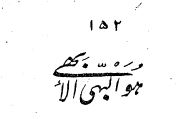
- [X] The word Baha' : Quintessence of the Greatest Name of God : The writings of Bahā'-Allāh and his successors.
- From جناب بهاء Jināb-i Bahā' (`His eminence the Glory) to Bahā’-Allāh (The Glory of God): Mīrzā Ḥusayn `Alī Nūrī and theophanological titles utilizing bahā'.
- On Graphic/ Calligraphic Forms of the word Baha' as the Greatest Name of God
- Appendix I : On the origins,roots and significance of the title Baha' al-Dawla and related kingly epithets.
- Appendix II: On the origins, roots and uses of the Islamic honorific title Baha' al-Din.
- [X] Bibliographies and miscellaneous Notes
♦

-
The Voice of God and the Supreme Pen: Some Aspects of the `Letters to Kings and Rulers' of Muhammad, the Bab (d. 1850) and Baha'-Allah (d. 1892). Early Incomplete Web1 Recension PDf. Voice of God.pdf
- Alleged Letters of Jesus addressed to Rulers
- Letters ascribed to Muhammad addressed to the Kings and rulers of his day.
- Letters of the Bab addressed to the kings and rulers of his day
- Letters of Baha'-Allah addressed to the kings and rulers of his day.
![]()

- The Mysteries of the Light Verse (Q. 24:35) in Islamic and Bābī-Bahā'ī literatures. Pt. I
- The Mysteries of the Light Verse (Q. 24:35) in Islamic and Bābī-Bahā'ī literatures. Pt. II.
![]()
THE TRANSCENDENCE OF THE KHATAM AL-NABIYYIN (" SEAL OF THE PROPHETS")

THROUGH THE LIQA' ALLAH / AL-RABB

(THE ENCOUNTER-MEETING WITH GOD/ THE LORD).
- (1) The Arabic Jawahir al-asrar (Essence-Gems of the Mysteries" c.1268/1860-61) and the Persian Kitab-i Iqan ("The Book of Certitude", c. 1261/1861) and question of the Khatam al-nabiyyin (the "Seal of the Prophets").
- (2) Extracts from the Kitab-i Badi`(c. 1867), the Lawh-i Sarraj (c. 1867) and other Babi-Baha'i Sacred Writings in confirmation of the veracity of the Qur'anic Khatam al-nabiyyin (Q. 33:30b) - with an Appendix on the positive Babi-Baha'i use of the phrase Khatam al-nabiyyin, Muhammad is the "Seal of the Prophets" in Babi-Baha'i scriptural texts.
- (3) The Lawh-i Khatam al-Nabiyyin 1, A Tablet of Baha'u'llah to Hasan Shahabadi in confirmation of the Khatam al-nabiyyin of Qur'an 33:40b.
- (4) Further Scriptural Tablets of Baha'u'llah relating to the question of the Khatam al-nabiyyin including that to Aqa-yi Bashir-i Ilahi.
- (5) Extract from the Lambden Ph.D 1980s + 2002. Liqa' Transcends Khatam al-Nabiyyin. PDf. Lambden_phd-80-86.pdf
- (6) Khatamiyya (Q. 33:40b) and the Liqa' Allah (the Divine Theophany) - An Early Web Beta Version.
- (7) The 2017 Expanded Ph.D English text for Louis Henezut, Lambden-Transcendence 2017.pdf
- (7a), The 2018 French Published Version Trans. Louis Henezut PDf. Henuzet_--Lambden_paper_2018.pdf
- (8) The Bābī-Bahā’ī transcendence of khatam al-nabiyyīn (Qur’ān 33:40) as the `Finality of Prophethood’. Beta monograph version F30 - Last updated 20-05-2018,
Lambden- Seal 2018-F30.pdf
- (9) Liqa'-Allah (The "Encounter -Meeting with God") and the Bābī-Bahā’ī transcendence of the Khatam al-nabiyyīn (Qur’ān 33:40b) as the `Finality of Prophethood’ (revised and expanded version of the above papers). Forthcoming 2022.
THE ISOLATED OR DISCONNECTED LETTER OF THE QUR'AN
- The Isolated Letters of the Qur'an الم-المر A Note upon the year 1844/1260 and the Bābī-Bahā'ī interpretation of The isolated letters of the Qur'ān.
- The Isolated or Disconnected Letters of the Qur'an and their Babi-Baha'i use and Interpretations in the Writings of Sayyid `Ali Muhammad Shirazi, the Bab (d, 1850 CE) and Mirza Husayn `Ali Nuri, Baha'u'llah (c. Bahji near Acre, 1892 CE). Adapted and Expanded froma MESA paper delivered in the year 2000.
![]()
The Islamic Basmala and the Neo-Basmalas of the Bab and Baha'-Allah
- The Islamic Basmala, its Abrahamic religious roots, and its Shaykhi Interpretations within select writings of Shaykh Ahmad ibn Zayn al-Din al-Ahsa'i (d.1241/1826) and Sayyid Kazim al-Husayni al-Rashti (d. 1259/1843).
- The Basmala and the Neo-Basmalas in the writings of the Bab, Baha'u'llah and `Abdu'l-Baha' : Some Notes on Babi and Baha'i Commentaries of the Qur'anic "In the Name of God, the Merciful, the Compassionate" (Bismillah al-Rahman al-Rahim) and its many reconfigurations. 2023-4.
![]()
-
Qā'im (Ariser) and Qayyūm (Deity Self-Subsistent) : the background and significance of twin messianic advents in Bābī-Bahā’ī scripture. Part 1.
-
Qā'im (Ariser) and Qayyūm (Deity Self-Subsistent) : the background and significance of twin messianic advents in Bābī-Bahā’ī scripture. Part II.
![]()
- Shi`i and Babi-Baha'i Imamology: Some introductory Notes on the Twelver Imams and traditions attributed to them in Shi`i and Babi-Baha'i scriptural sources. Presented at the Irfan Colloquia Session #109 (English), Bosch Bahá'í School: Santa Cruz, California, USA May 16–20, 2012.
- Abstract
- The Bābī-Baha’i Demythologization of Shī`ī messianism: On the question of the reality of the twelfth Imam, Muhammad al-Mahdi, the alleged son of the 11th Imam, Ḥasan al-`Askarī (d. 260/874) and Narjis Khanum.
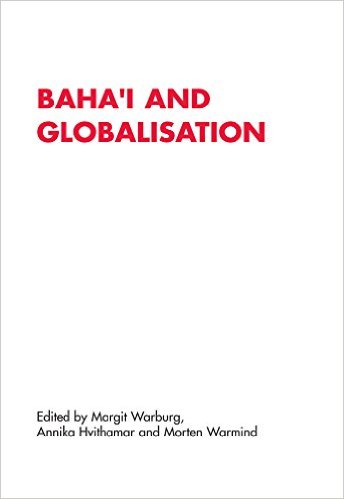
- "The Messianic Roots of Babi-Baha’i Globalism.” in Margit Warburg et al. eds. Baha'i and Globalisation. RENNER (Research Network on New Religions) and the University of Copenhagen, Departments of Sociology and the History of Religions (August 21-24, 2001), 2005. PDf. Messianic Roots.pdf
![]()
- Some Notes upon the Bābī and Bahā'ī Interpretations of portions of the Qur'ānic Sūrat al-Kahf (Surah of the Cave), Q. 18.
![]()
![]()
IMMORTAL HEROINES
![]()

Some aspects of Abrahamic and Bābī-Bahā'ī theological-aesthetics
![]()

Some Aspects of Angelology, Light, and Throne-Color Mysticism in Bābī and Bahā'ī Scripture.
![]()
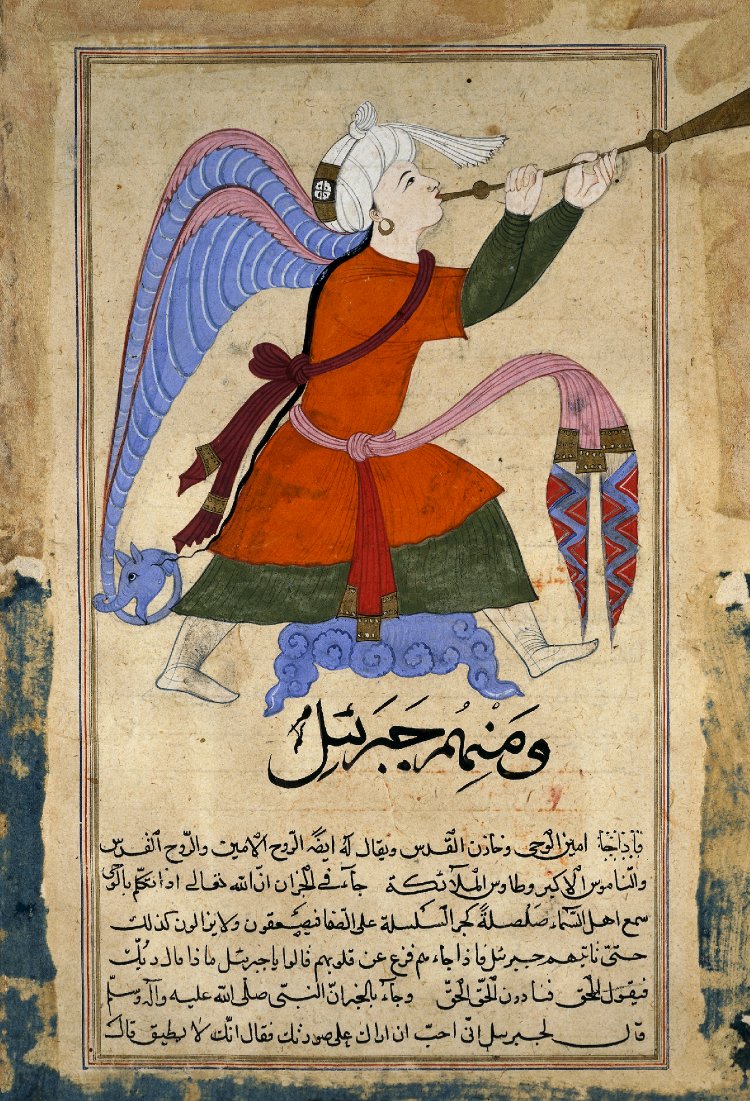
ANGELOLOGY
- Abrahamic and Babi-Baha'i Angelology: Some Introductory Notes.
- A Select Compilstion of Babi-Baha'i Scriptural Writings relating to Angels and Aspects of Angelology and related Subjects.
- Cherubim, Seraphim and Demythologization: Some aspects of Bābī-Bahā'ī angelology and the malā' al-a`lā (Supreme Concourse), A Paper read at the Ifran Colloqium London, 2001. Abstract only.
![]()
ALCHEMY
Alchemy: An Encyclopedia article
Alchemical Gnosis in Bābī-Bahā'ī Scripture
![]()
لَبَّيْكَ
- The Talbiya or... لَبَّيْكَ اللَّهُمَّ Labbayka ("Here am I") in Abrahamic, Islamic and Babi-Baha'i Literatures.
- "Progressive Revelation": Some Thoughts on a Bābī-Bahā'ī Doctrine of the Succession of Divine Religions.
- Gnosticism and the Babi-Baha'i Religions.

World Religions and Babi-Baha'i Concepts of Wisdom
![]()
![]()
![]()
The Epistemology of `Abdu'l-Bahā and the Four Criterion of Truth
مَا كَذَبَ الْفُؤَادُ مَا رَأَى
A Scriptural Tablet of `Abd al-Bahā' commenting upon Qur'an 53:11:
"The inmost heart (al-fū'ād) lieth not about what it envisions".
![]()
BABI-BAHA'I BIBLIOGRAPHICAL NOTES AND STUDIES
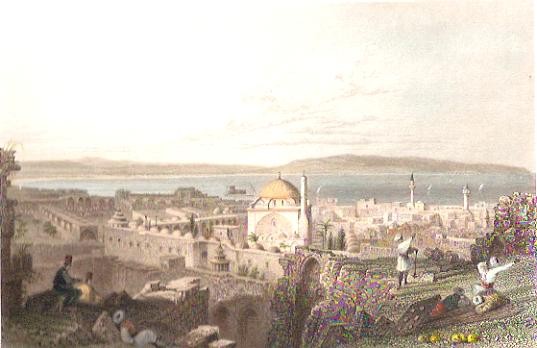
19th cent. View of Acre and Mt.Carmel.
Palestine-Israel, Western Galilee,
- Acre (Akko = `Akka')
- Haifa, Mount Carnel...
![]()
Thomas K. Cheyne (1841-1915),
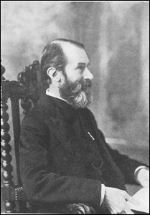
Thomas Kelly Cheyne (1841-1915)
- Thomas K. Cheyne (1841-1915) Biblical Scholar and Bahā'ī, A Brief Notice.
- Thomas K. Cheyne (1841-1915), Biblical scholar and Baha'i, An annotated Bibliography - Being Updated 2018.
- Thomas K. Cheyne (1841-1813) ... Annotated Bibliography Web I c. 2009. PDf. TKC-Web1 2009.pdf
- Select Persian Tablets of `Abd al-Baha' to Thomas K. Cheyne and other materials pertinent to his Baha'i status and associations.
- Baha'i related materials in The Christian Commonwealth ...
Frances E. Godfrey (1844-1907),
The first wide of Thomas K. Cheyne and the third daughter of the Revd D. R. Godfrey, fellow of Queen's College, Oxford,
- Some Biographical Notes ...
Elizabeth Gibson Cheyne (1860-1931).

The Poetess Elizabeth Gibson Chyene (1869-1931).
- Elizabeth Gibson Cheyne (1869-1931) : Some Biographical and Bibliograpical Notes.
- The Poetry and other writings of E. G. Cheyne :Pdf. From Lambden Web1: Elizabeth Gibson Cheyne-Poetry+.pdf
The first wife of TKC was Frances E. Godfrey (1844-1907), the third daughter of the Revd D. R. Godfrey, fellow of Queen's College, Oxford, and rector of Stow, Norfolk, whom he married on 31st January 1882. His second wife was the poetess Elizabeth Gibson Cheyne (1869-1931) daughter of John Pattinson Gibson (a chemist of Hexham) whom he married (aged 69) on August 28th [19th] 1911 about four years after the death of his first wife. Elizabeth Gibson was the sister of the `War Poet' Wilfred Wilson Gibson (b. Hexham 1878-1962). Both of T.K. Cheyne's marriages were childless.
![]()
♦



